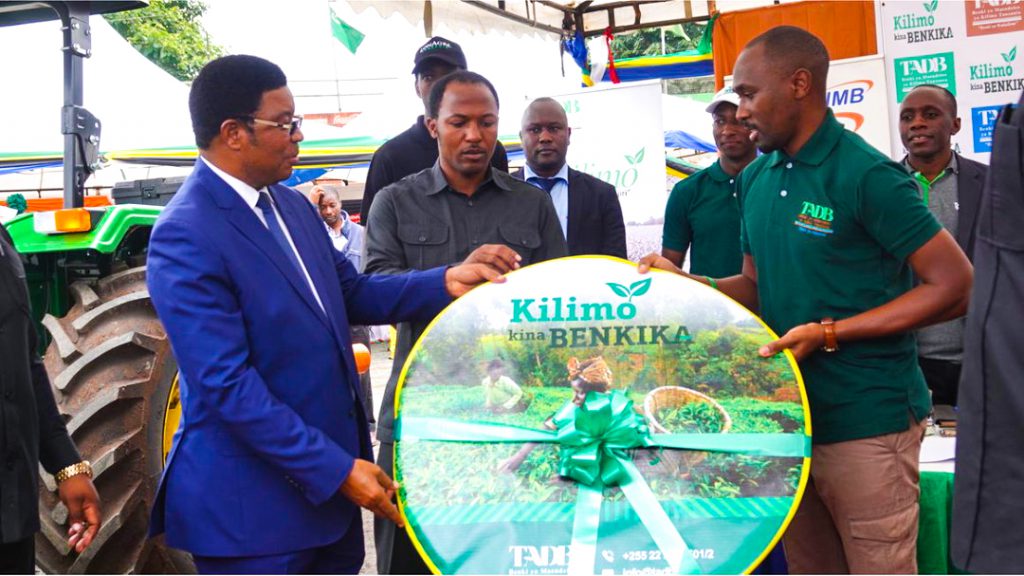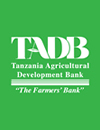
It has been a roller-coaster ride for the agricultural sector in Tanzania for the past six decades.
It has been a roller-coaster ride for the agricultural sector in Tanzania for the past six decades.
As we celebrate 60 years of our Independence it is indeed worthy looking into the history, reminisce on the past, present and take a look at what the future holds.

It is evident that throughout the six decades, our governments have prioritised initiatives that are geared towards giving a shot-in-the-arm to the agricultural sector.
This is in consideration of the importance of the sector for the people of Tanzania’s livelihood, the country’s economy and the potential contribution of the nation to the continent and the world at large.
Important sector, Tanzanians’ standards of living are changing for the better with most of them having sufficient food on the table with surplus for their economic wellbeing and the country well-nigh inching closer to achieving overall food security.
Today, according to 2020’s BoT annual reports that the agricultural sector contributed to 26.5% the breakdown being 14.7% crops, 7.4 livestock, 2.7% forestry and hunting, and 1.7% fisheries.. These statistics alone indicate that the sector significantly contributes to the country’s socioeconomic development.
It is worth noting that the World Bank has identified agricultural sector to be the sector than can enable nations to increase incomes among the poor by up to 4% compared to any other sector.
About 65% of our country’s population is employed in the agricultural sector. This creates emphasis on how the sector is at the epicenter of our nation’s journey into attaining the Africa 2063 goals, the UN sustainable agenda 2030, so to say ‘development’.
The 2012 AgriFin report by the World Bank emphasised the need for increased lending in the agri sector especially among smallholder farmers. The report further explains how agriculture lending has been deemed unattractive among commercial lenders due to high risks, high costs of lending and low returns.
Production risks, and geographical factors are identified as contributing factors to the risks.
However, it is important to note that, beside the risk of the sector, over the last 60 years of Tanzanian’s independence, the succession governments have been setting policies, frameworks and institutions to enhance credit accessibility for the development of the agricultural sector for the benefit of its people.1961-1967 Just after Independence
This was the era where Tanganyika and later Tanzania under the leadership of the late Mwl Julius K. Nyerere.

Inherited from the colonial Land Bank of Tanganyika, the now independent Tanganyika formed the Agricultural Credit Agency (ACA). With the role to extend credit specifically for the agricultural sector.
Beside expectations for ACA to spearhead agricultural sector, ACA failed as a result of inherent of Land Bank of Tanganyika’s losses of liabilities, high lending costs which was resulted by administration of thousands of small individual loans and what was identified as ‘capitalist imbalance ACA failed.
Its failure led the government to form National Cooperative and Development Bank (NCDB). This was following the legal and operational recognition of cooperatives’ role as means to enhance credit to farmers. The formation and operationalisation of cooperative unions aimed at enhancing reduction of operational costs.
Later in the period, NCDB was split to form National Development Credit Agency (NDCA), National Insurance Cooperation (NIC) and National Bank of Commerce (NBC) which incorporated other nationalised financial institutions.
Ujamaa era (1967-1980)
In 1971 the NDCA was replaced by Tanzania Rural Development Bank (TRDB). The bank was funded by the state and other international development agencies.
TRDB was able to extend credit to more agricultural facilities compared to the predecessor institutions. However with decline of exports and imports following the existed policies, agricultural productivity and lending were affected.
Transition to capitalism economy (1980-1985)
Kilimo Kwanza was the slogan. Aiming to influence more people to engage in agriculture to feed internal market and external. Increase production was the goal of the government.

The era saw more infrastructures being put in place one evident being the construction of the Bukoba-Mwanza-Dar es Salaam road. The era was characterized by trade liberalization and need to improve livelihood of the people. It was also in this era whereby TRDB was transformed into ‘Cooperative and Rural Development Bank (CRDB).
This was influenced by return of ‘cooperative unions’ and formation of its apex organization the Cooperative Union of Tanzania (CUT). CRDB continued to enhance agricultural lending to the sector.
The privatization era (1995-2005)
Having noticed a decline of agricultural contribution to the GDP falling from 41.9% to 27% and seeing an increase of other sectors including trade, public administration, by the 1993/94 financial year there was an increase in privatization of the marketing structures, agricultural agencies.
The productivity increased tremendously. For example, a 75% increase of cotton production was registered from 48,000MT in 1993/94 to 84,000MT in 1996/97.
In 1996 the Cooperative Rural Development Bank (CRDB) was privatized to the current CRDB Bank Plc. 1997 also saw splitting and privatization of the National Bank of Commerce into National Microfinance Bank (NMB), NBC Holding Corporation and NBC (1997) Limited.The Public-Private Partnership for agricultural transformation era (2005-To date)
This is an era where Tanzania sees vigorous implementation of policies, strategies and setting up of implementation frameworks to enhance agricultural transformation. These were geared at enhancing food security and reduction of poverty.
Following development of MKUKUTA phase I (National Strategy for Growth and Poverty Reduction -NSGPR) whose implementation began in 2005.
Also, Tanzania signed the Comprehensive Development Program (CAADP) COMPACT in 2009, followed by launching the Tanzania Agricultural and Food Security Financing Plan (TAFSIP) in 2011, as an instrument for implementing the CAADP COMPACT.
Other policies included; implementation of the Agricultural Development Programme (ASDP I) in (2005–2010) followed by phase two, i.e. ASDP II (2011–2014). In 200 saw the adoption of ‘Kilimo Kwanza’.
Kilimo Kwanza (2009) was a national program with a holistic set of policy instruments and strategic interventions to accelerate agricultural transformation in the country.
The program had 10 pillars whereby the second pillar (Financing Kilimo) sought on establishment of The Tanzania Agriculture Development Bank (TADB).
The Tanzania Agricultural Development Bank
Under the Companies Act no. 2 of 2002 and given Certificate of Incorporation no. 94075 on 26th September 2011, Tanzania Agricultural Development Bank Limited (TADB) a state-owned development finance institution (DFI) was established.
The key role of the bank being a catalyst for delivery of short, medium and long- term credit facilities for the development of agriculture in Tanzania.
Its establishment is among the key initiatives and national goals enshrined in the Vision 2025 to achieve food self-sufficiency and food security, economic development and poverty reduction. In 2015, the bank was officially launched, extending direct lending to the agricultural sector.
With the government receiving funds from the African Development Bank Group, and the bank being tasked with implementation of the Government’s Second-Generation Financial Sector Reforms, the national policies and strategies for the development of the agricultural sector, partnership was a key strategy to move forward.
In 2018, TADB in partnership with the Prime Minister’s Office and the Ministry of Finance and Planning (MoFP) launched the Smallholder Credit Guarantee Scheme. A special initiative aiming at addressing bottlenecks faced by smallholder farmers and SMEs in accessing commercial credit.

The scheme provides banks with liquidity as well as credit guarantees of 50% of the requested loan. Through the scheme, the bank has been able to lend smallholder farmers at a coverage of Sh106billion by September 2021.
Impacting directly 11,785 smallholder farmers and SMEs directly. The scheme has also enabled forging strategic partnerships with 13 financial institutions.
These are NMB Bank, CRDB Bank, NBC Bank, Azania Bank, TCB, STANBIC, Maendeleo Bank, FINCA Microfinance, Uchumi Commercial Bank, Tandahimba Community Bank (TACOBA), Absa, Kilimanjaro Co-operative Bank (KCBL) and Mufindi Community Bank (MUCOBA).
The TADB direct lending since inception of the bank has reached Sh285.3billion, financing 271 projects, 37 processing and value addition, 21 storage facilities and 113 farming technology equipment.
Along with TADB, it is equally note of other government’s efforts in de-risking and ensuring access to credit in the agricultural sector is enhanced.
This include initiation of PASS Trust, setting enabling environment for organizations such as SAGCOT, AGRA and the like-minded organizations to incentivize the sector.
As we celebrate these 60 years, I joining fellow country-men and women to congratulate all our government under the leadership of H.E Samia Suluhu Hassan on continued efforts to make farmers reap the benefits of their labor.
Happy Independence celebrations
Frank Nyabundege is Managing Director of Tanzania Agricultural Development Bank (TADB
